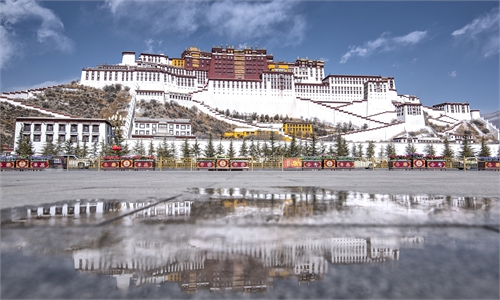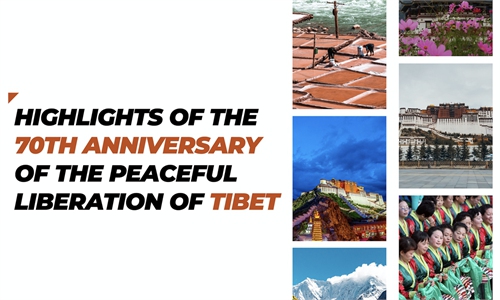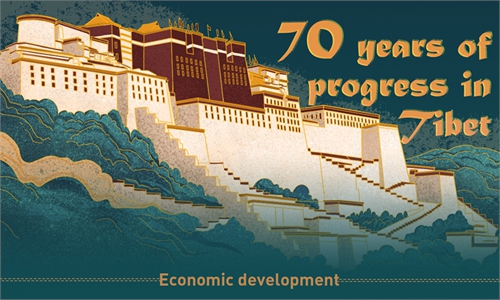White paper shows real Tibet achievements in 70 years, demonstrates confidence in path amid Western troublemaking
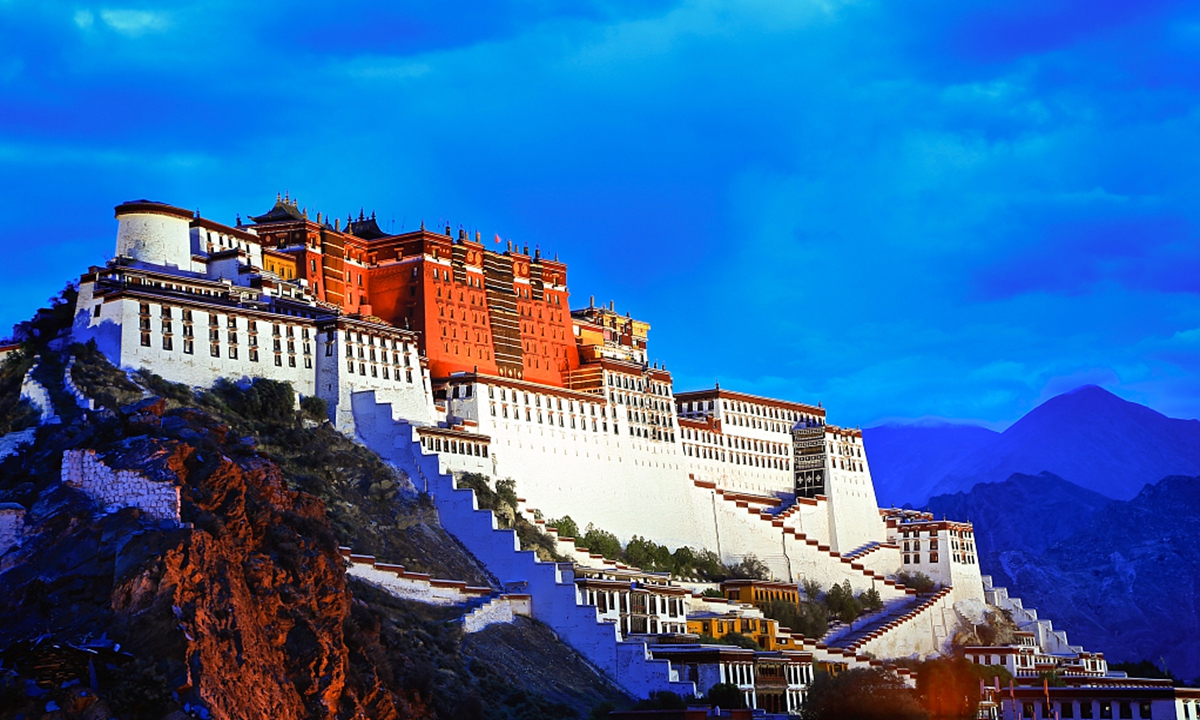
Potala Palace Photo: CFP
China on Friday issued a white paper on Tibet Autonomous Region, which highlighted economic and social achievements over the past 70 years since peaceful liberation, and also vowed to fight against secessionist forces backed by the West and firmly safeguard regional stability and national unity.
Amid Western attempts to use the border ethnic regions to contain China's development, particularly Xinjiang recently, but Tibet being a potential target, Chinese observers saw Tibet's stability and prosperity as the best response to Western ulterior intentions, noting the secessionists agenda is doomed to fail.
The white paper, titled "Tibet Since 1951: Liberation, Development and Prosperity," was published by China's State Council Information Office.
It looked back into history and demonstrated how the peaceful liberation emancipated serfs and enabled them to live new lives. Progresses have been made in economic, legal and social arenas and the region won the war against poverty in 2020.
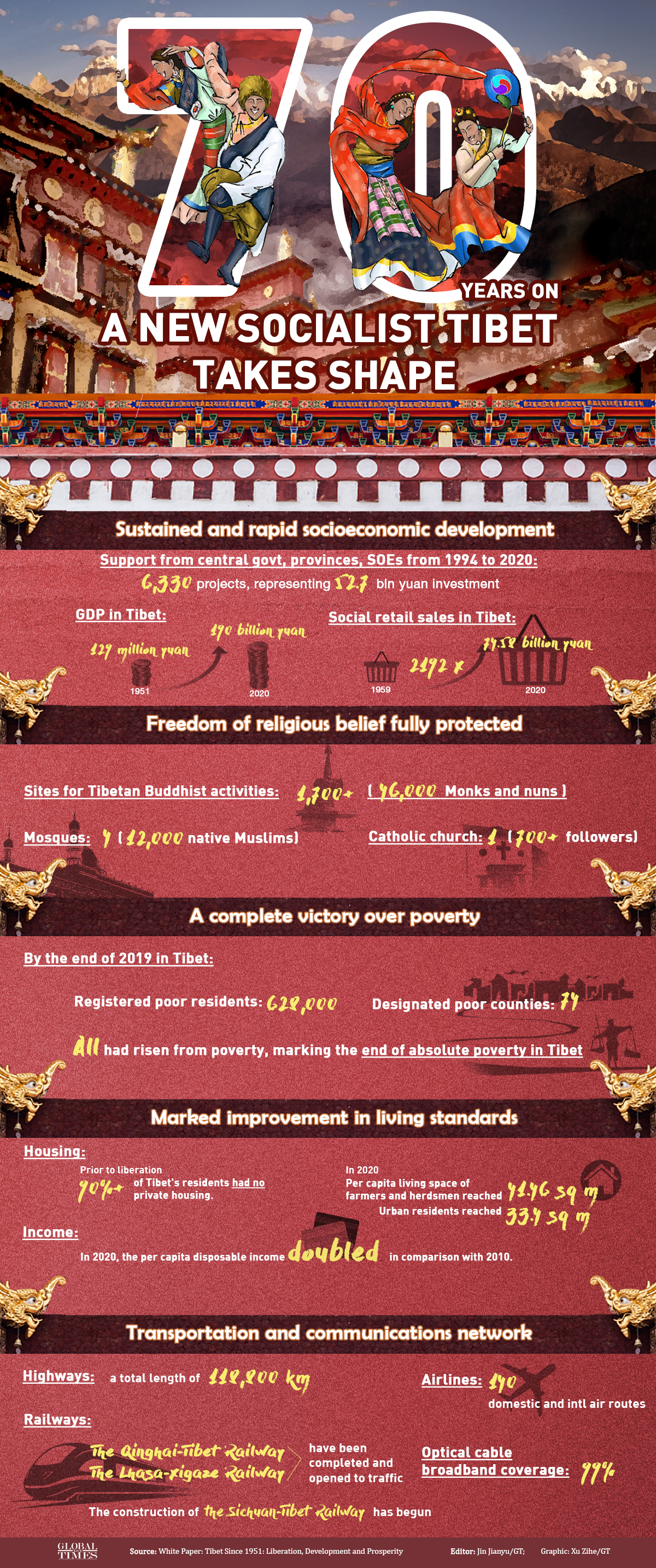
70 years on, a new socialist Tibet takes shape. Graphic: GT
Average life expectancy in Tibet increased from 35.5 years in 1951 to 71.1 years in 2019. In 2020, the per capita disposable income in Tibet doubled in comparison with a decade ago. Average per capita disposal income of rural residents was 14,598 yuan ($2,271) in 2020, up 12.7 percent year on year, while that of urban residents was 41,156 yuan, a 10 percent year-on-year rise, according to the white paper.
Some 600 religious figures in Tibet serve as legislators and political advisors of China while ordinary people's freedom of religious belief was well protected.
By 2020, 92 reincarnated Living Buddhas had been identified and approved through traditional religious rituals and historical conventions. The Tibetan Buddhist Institute and its 10 branches now have more than 3,000 monks and nuns who are studying the sutras, 240 received senior academic titles between 2005 and 2020.
The region's delicate environment has been well preserved, with the forest coverage reaching 12.3 percent in 2020. The comprehensive vegetation coverage of natural grassland grew to 47 percent and the wetland area totaled 6.53 million hectares.
The white paper, with rich numbers and facts, marked achievements Tibet has made in the past seven decades and signaled confidence in a right path the region would continue on, Chinese Tibet studies expert said.
Lian Xiangmin, an expert from the China Tibetology Research Center, told the Global Times on Friday that what Tibet has achieved started from 70 years ago when central government signed the measures for the peaceful liberation (the 17-Article Agreement) with the local government of Tibet on May 23, 1951.
Showing a real Tibet to the world will be the best rebuttal to distorted depiction of the region portrayed in the West in a continuous attempt to stir up trouble , Lian said.
The US and some of its Western allies have been using Xinjiang to contain China's development intensively over the past months, and they also use the same trick on Tibet. To break down their ulterior actions, "we should together maintain stability in the region and build Tibet into a better, more beautiful place," the expert said.
